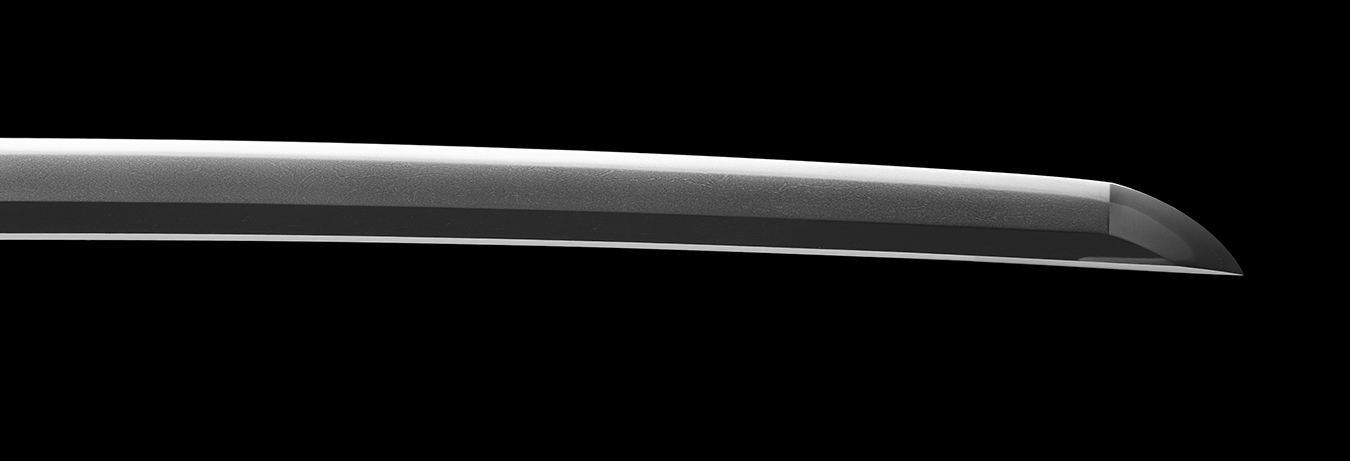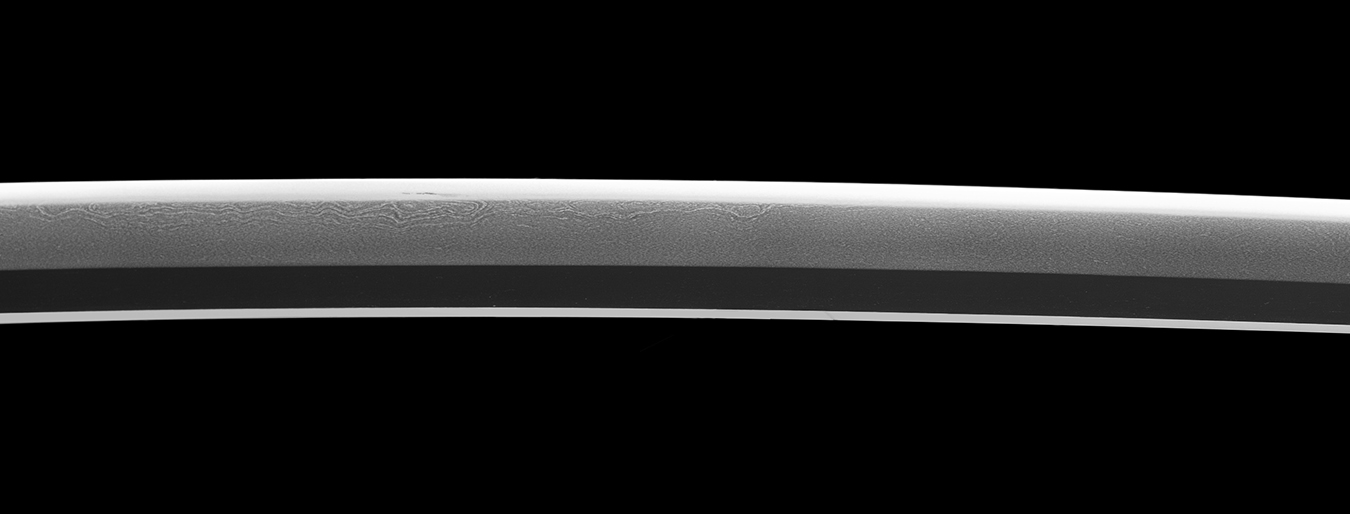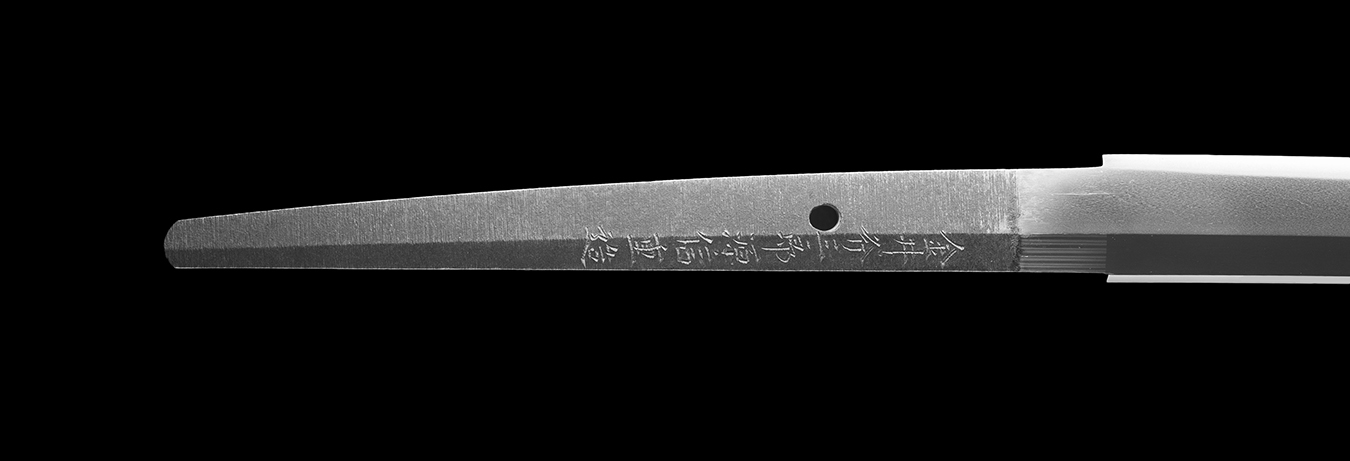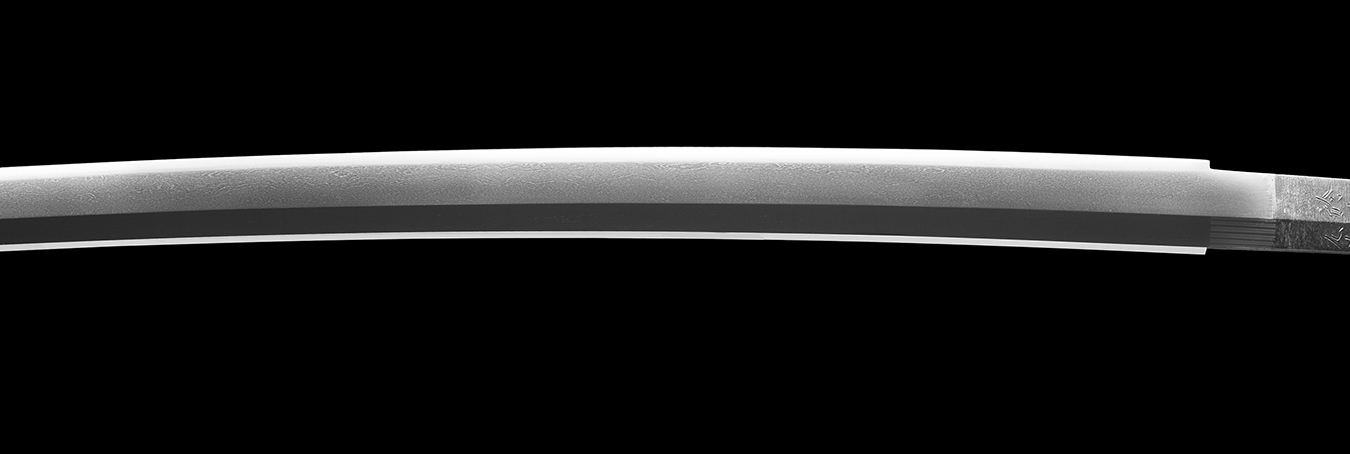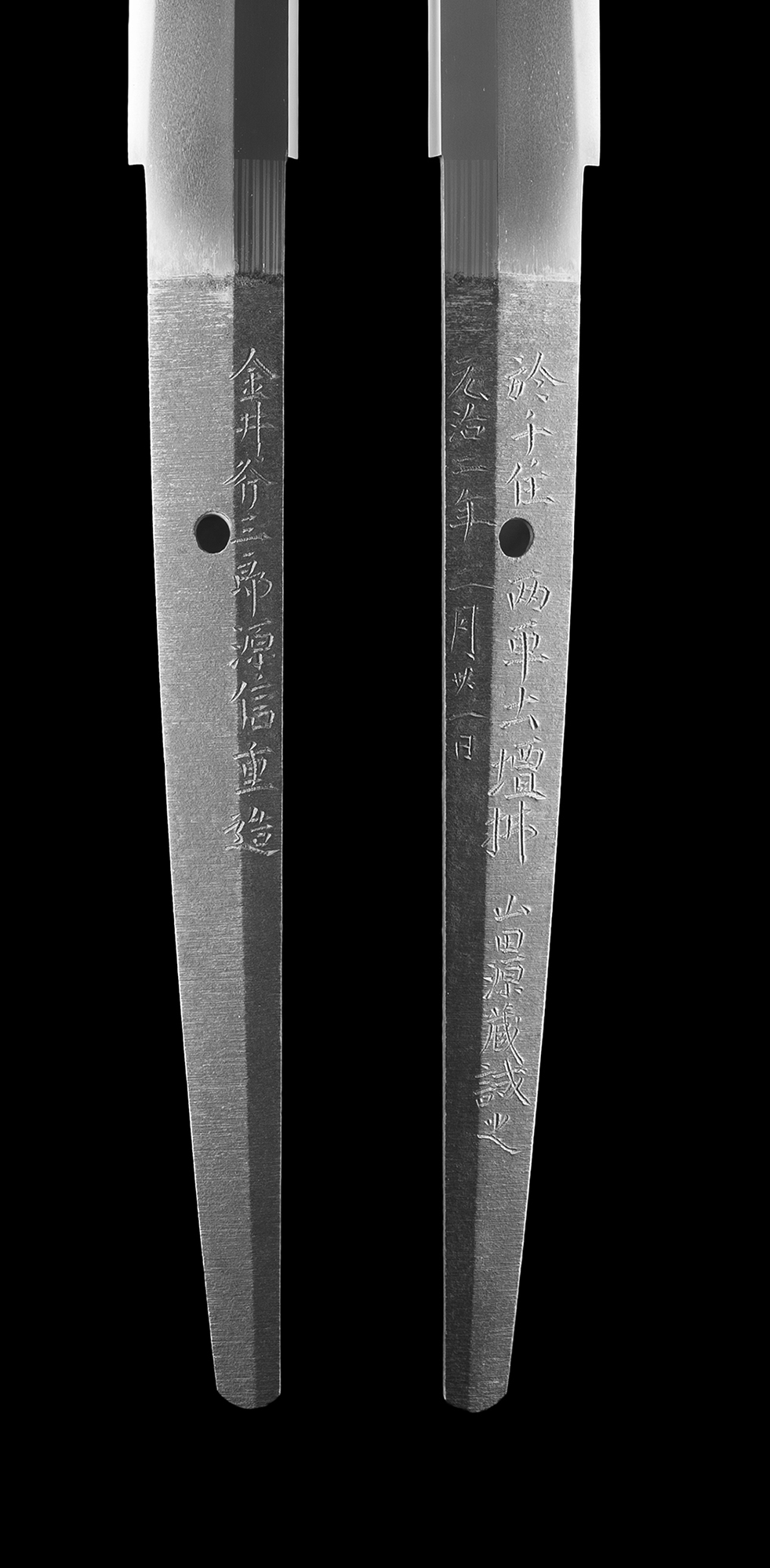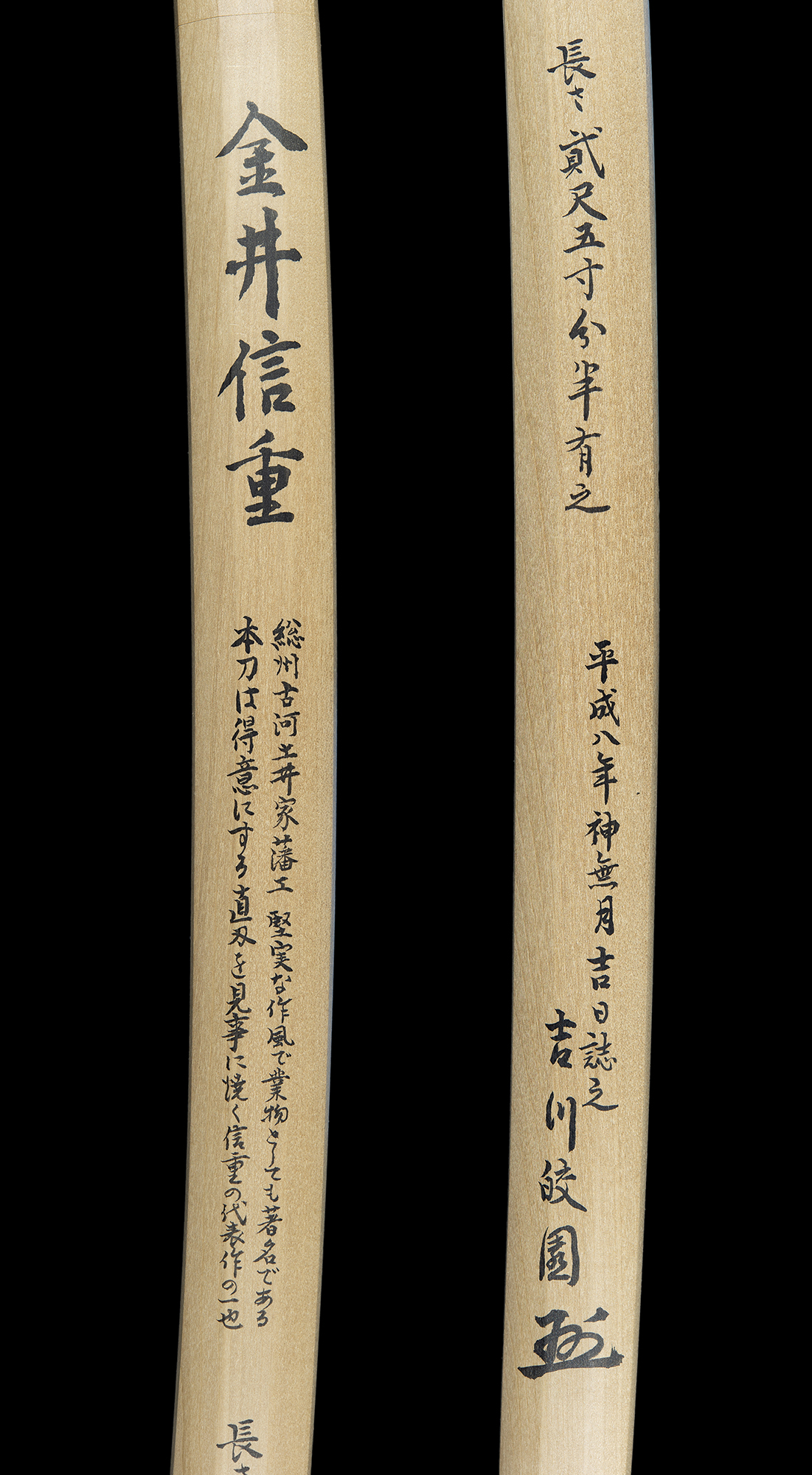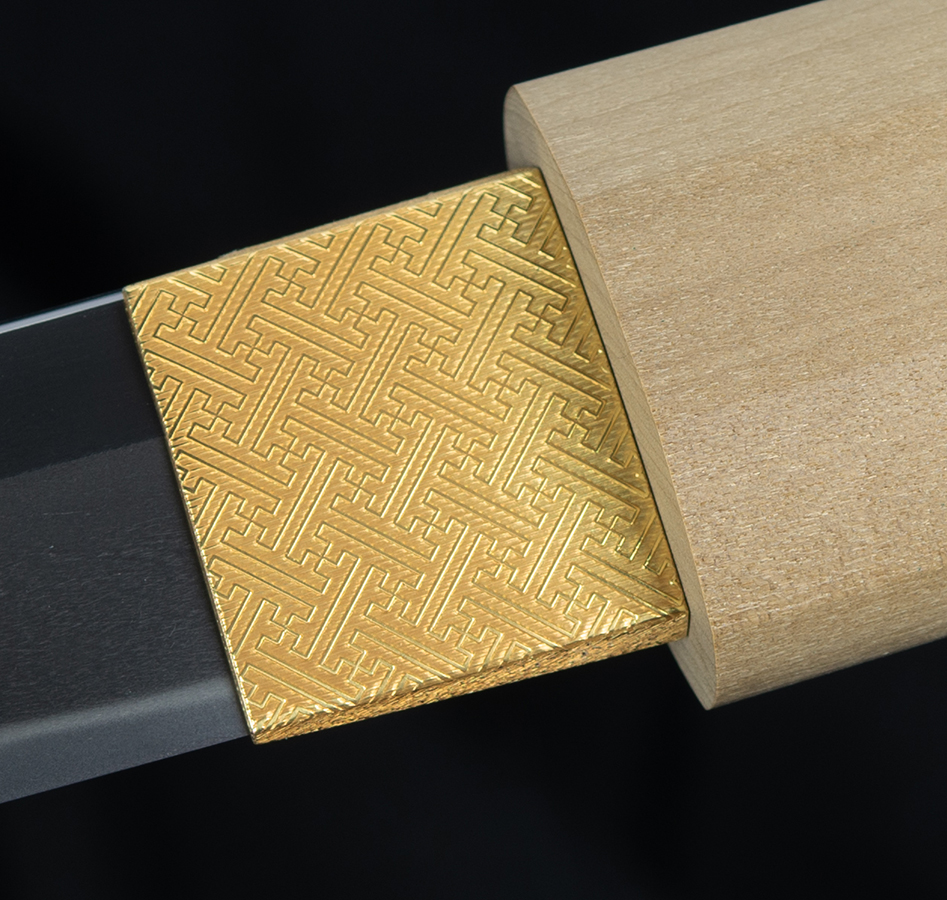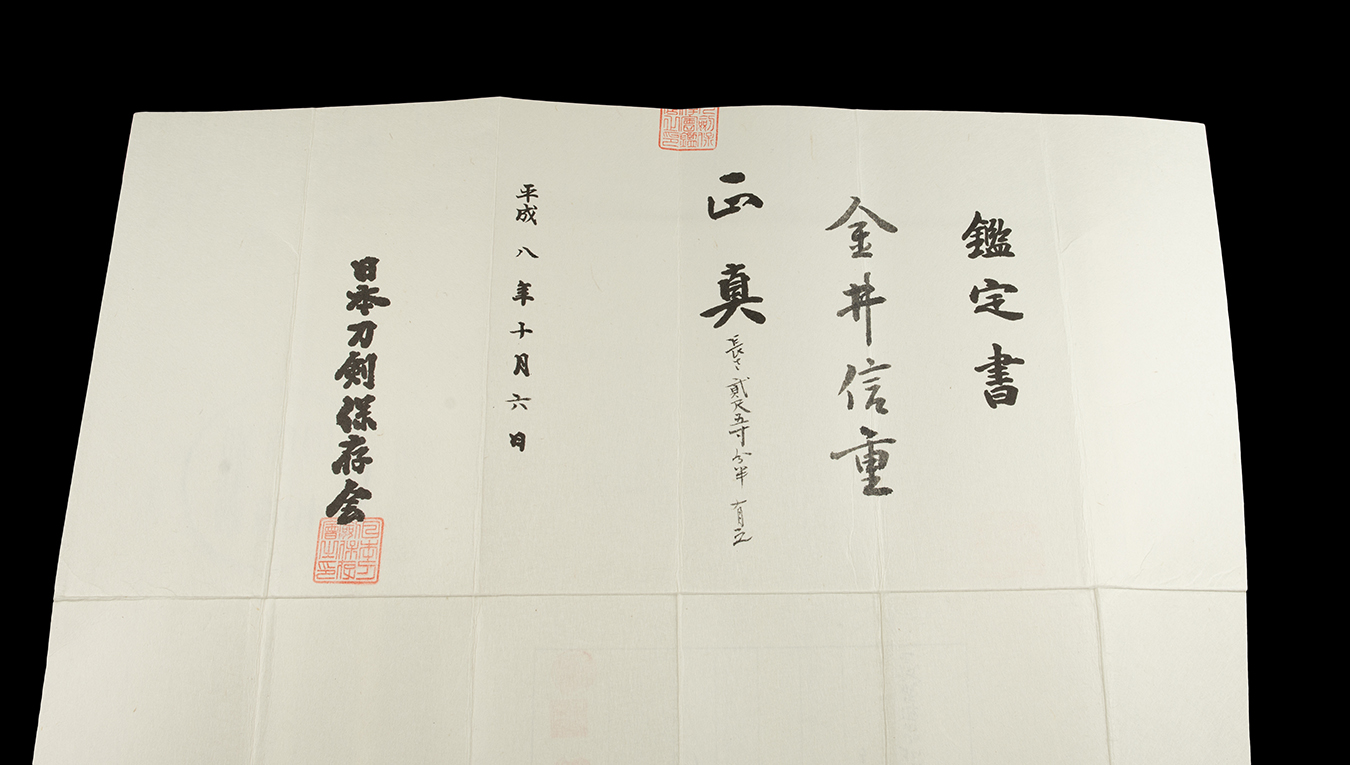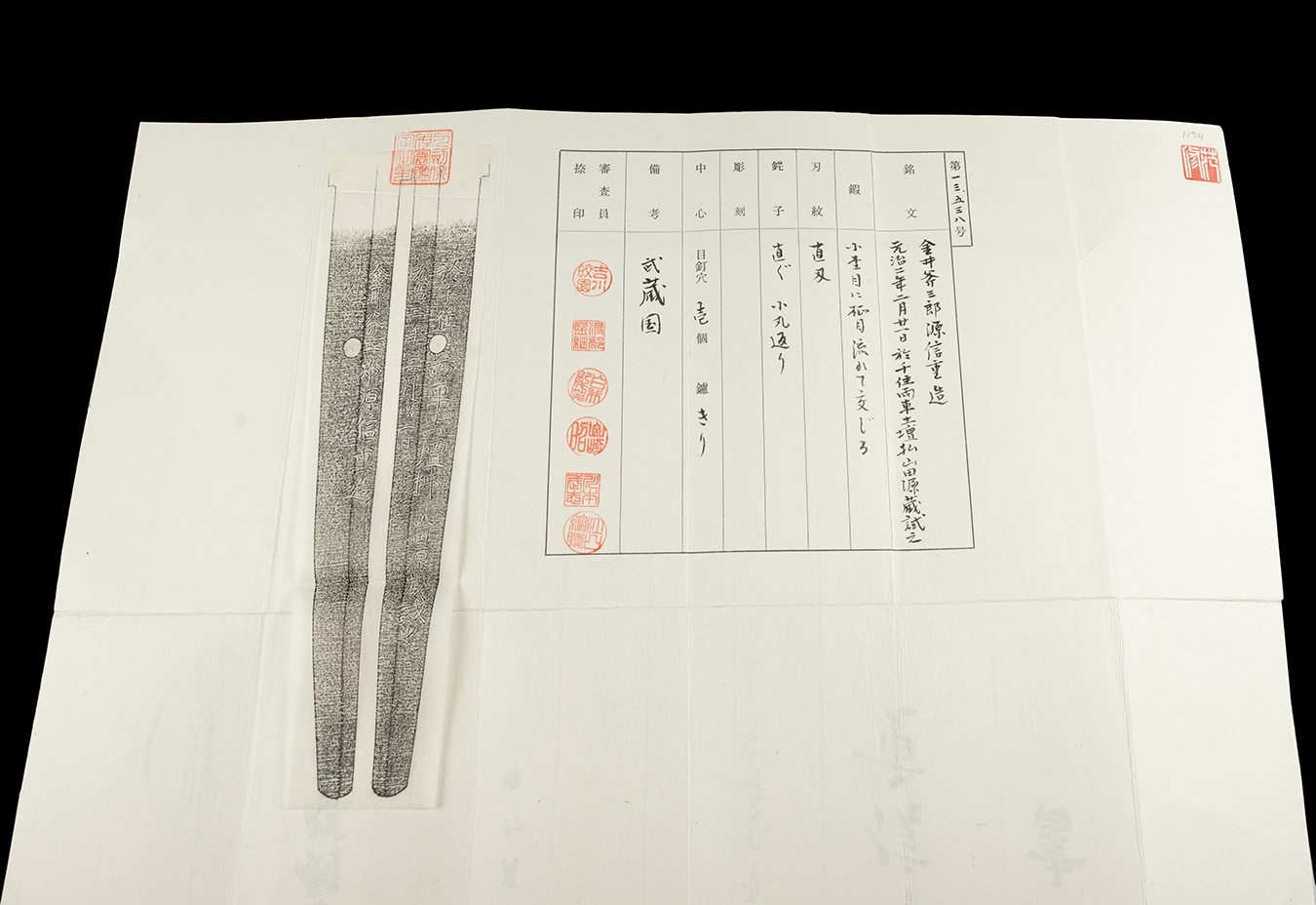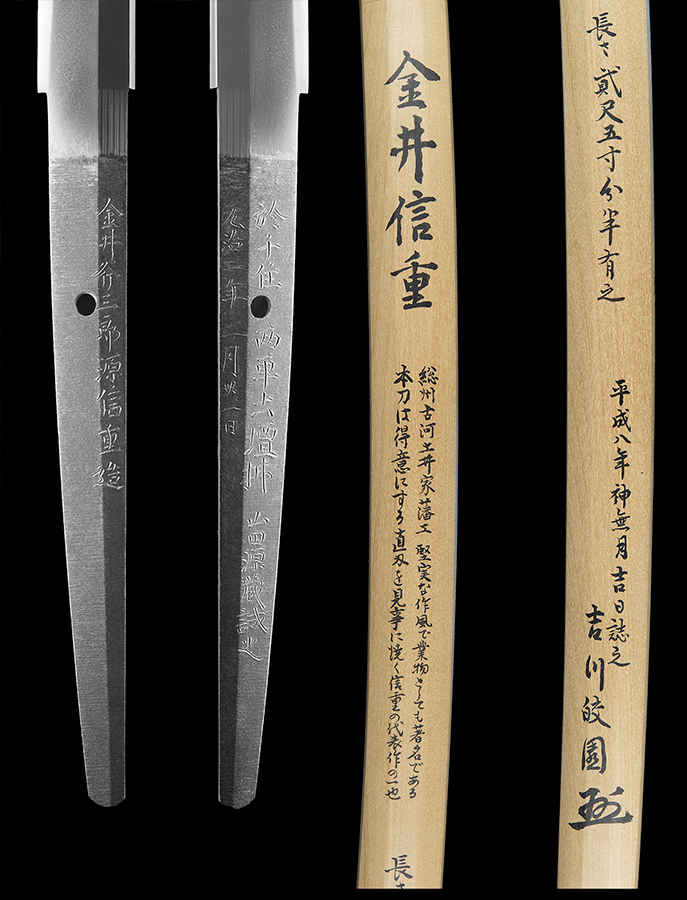|
| |||||||||||||||||||||||||||||||||||||||||||||||
Hamon : Nioi-deki suguha with with ko-nie mixed in. The nioi-guchi is tight and bright. Uchinoke can be seen in several areas.
Boshi : Ko-maru with a long water-fall return.
Kitae : Ko-itame hada o-hada near the ha in some areas.
About this sword : This is a long ubu katana by Nobushige with saidanmei. Nobuyoshi was a student of Tairyusai Sokan and a well-regarded smith. He is ranked at Chu Jo Saku by Fujishiro and 1.8 million yen in the TokoTaikan. His civilian name was Kanai Onosaburo (as recorded on the mei of this blade). He lived in Edo's Yushima-Tenjinshita, a Shinto shrine near Ueno Park.
This is a cutting test blade. The saidan mei translated as follows:
Oite Senju Ryokuruma Dotan futu Yamada Genzo tamashi no - Yamada Genzo (born in 1839) performed the ryokuruma cut with this katana.
This is the double wheel cut that goes through the hip. This is the most difficult cut to perform.
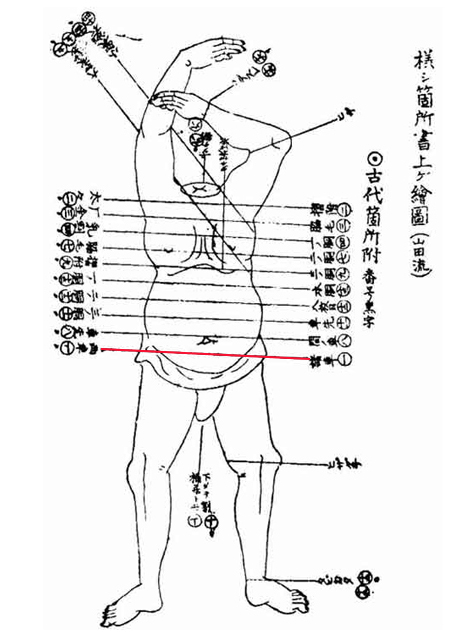
This blade passed NTHK shinsa under Yoshikawa Kentaro and also has his saya-gaki. The saya-gaki translates as follows:
Kanai Nobushige
Soshu (Shimosa Province) Koga Domain Doi Family retainer, strong and solid work known for its cutting capability called wazamono, This blade is done in Nobushige's well known yakiba of suguha and indeed his representative work.
Nagasa 2 shaku 5 sun 1 bu and some extra
Heisei 8th year, Oct month, lucky day, wrote this. Yoshikawa Kantaro kakihan
The polish of this blade is of the highest level and was done in Japan. This has a fine sayagata (manji design) habaki by Brian Tchernega. The polish is in perfect condition and the geometry is crisp. The nagashi (polsiher's mei) is highly skilled. The blade has a kitae-ware as shown. Overall it is a wonderful example of the large katana of the shin-shinto period with an exciting cutting test.
$15,000


